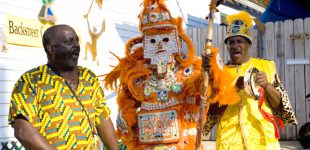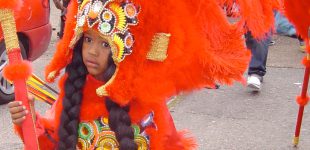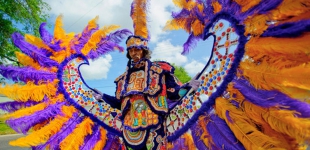The Mardi Gras Indians are African-American men, women and children in New Orleans who mask in suits inspired by Native American and African ceremonial dress. Documented in local news accounts as early as 1899, Mardi Gras Indian masking traditions commemorate the unions between Native Americans and enslaved black populations who sought refuge from the brutal system of chattel slavery. Mardi Gras Indians are best known for their beautiful, larger than life hand-sewn “Indian suits” comprised of beads, rhinestones and tall feather plumes. Mardi Gras Indian gangs feature several members that play significant roles in their masking performances on the city streets. These members include the Big Chief (leader of the group), Big Queen (female leader of the group), Flag Boy (carries the flag that represents the group), Spy Boy (leads the procession through the streets) and Wild Man (protects the procession with ritual displays of fierceness)…”
K-12 EDUCATOR RESOURCES
Discover teaching strategies for your classroom.Investigate one of these Lines of Inquiry
-
Photos
-
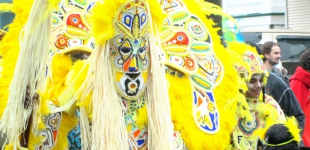
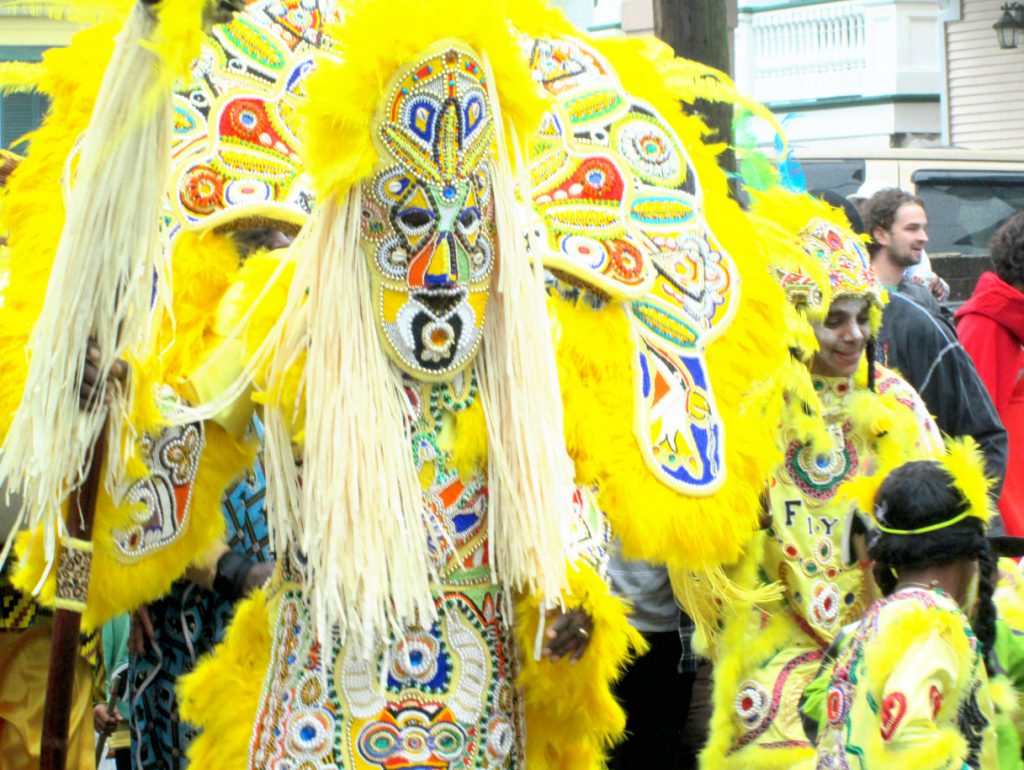
Big Chief Fi Yi Yi and the Mandingo Warriors Mardi Gras Indians Photo: Zada Johnson
Mardi Gras Indians Line of InquiryHow do Mardi Gras Indians use art and music to express themselves?
Videos
Audio
Profiles

Big Chief Allison "Tootie" Montana 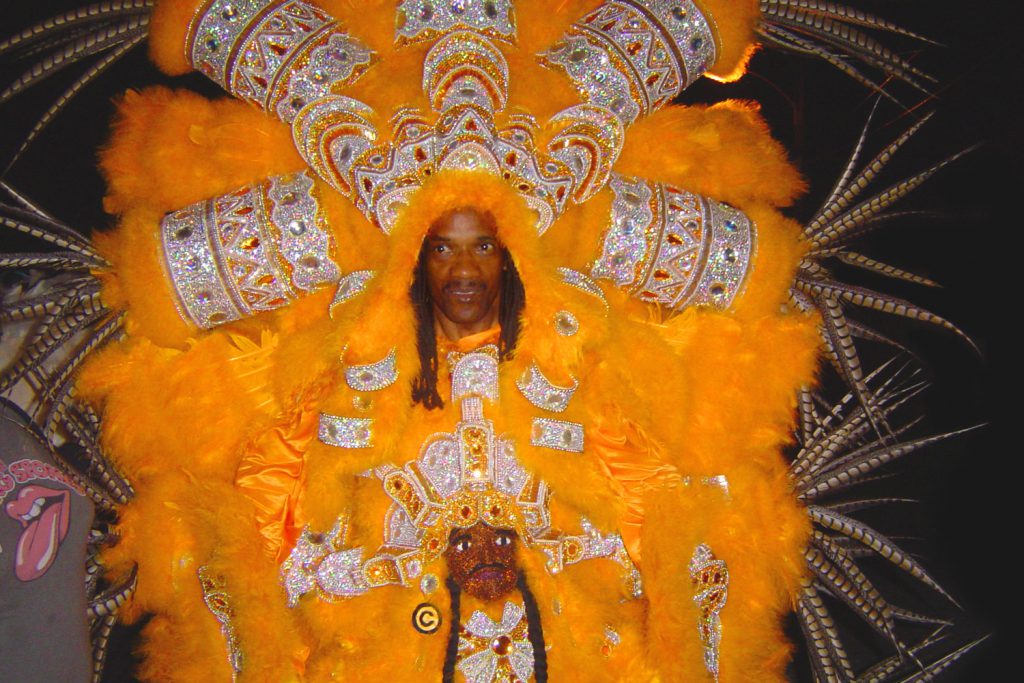
Big Chief Darryl Montana 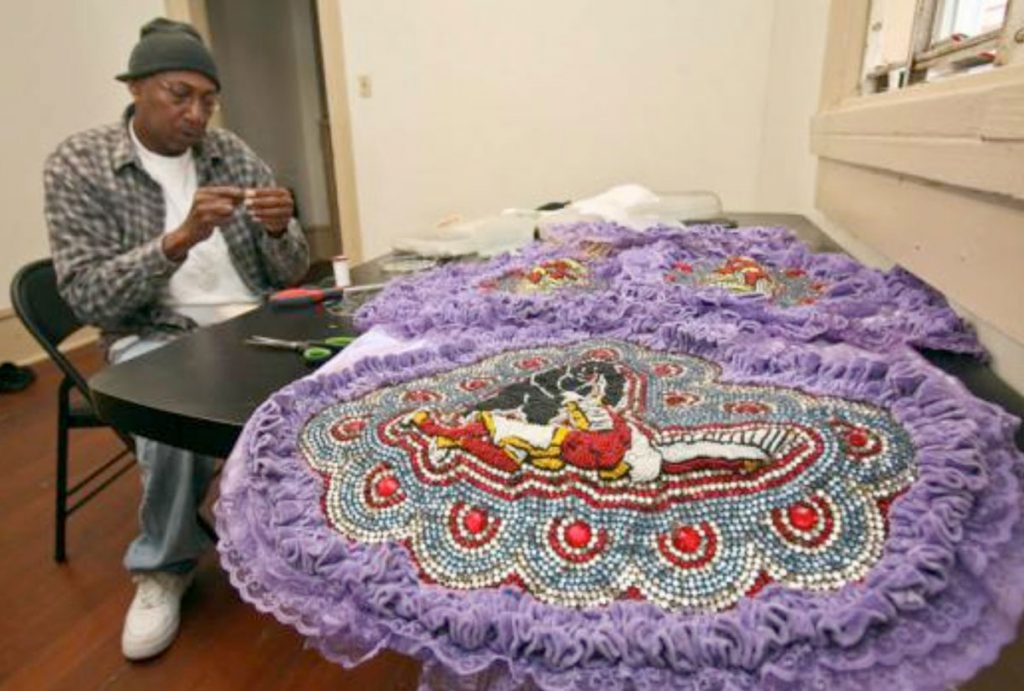
Big Chief Howard Miller 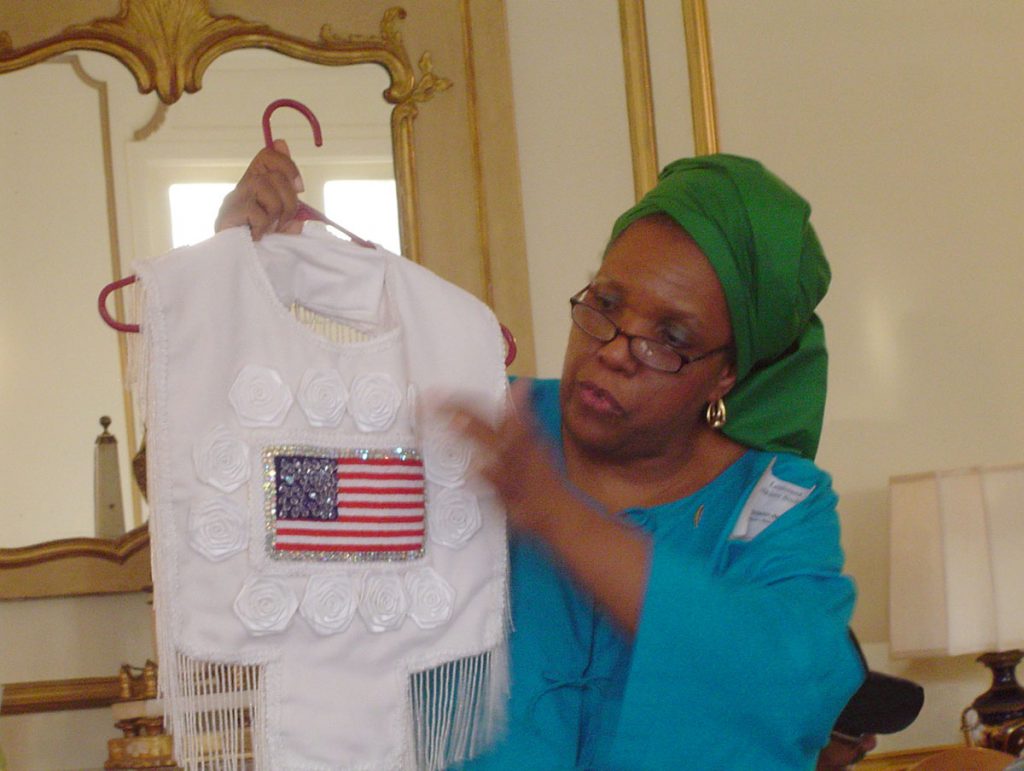
Big Queen Cherice Harrison-Nelson 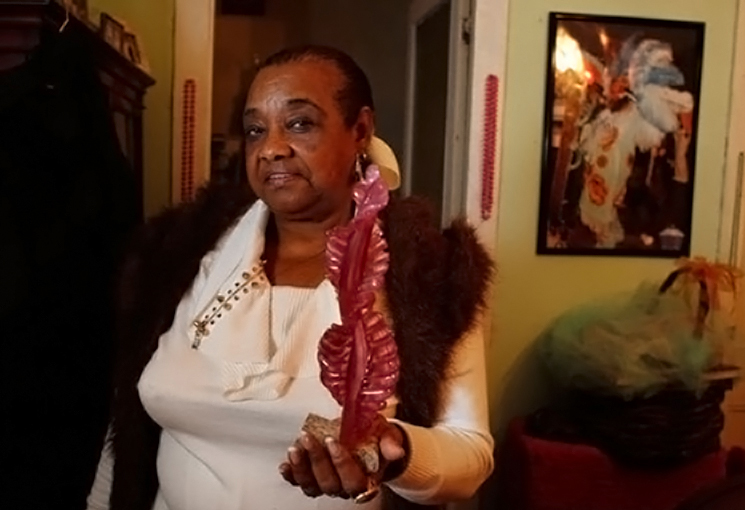
Litdell "Queen B" Banister
Teaching Strategies
-
-
Explore
Which of these audio and visual resources will activate imagination and draw students into this investigation?
Photos
-

Big Queen displays her beautiful bead work Photo: Zada Johnson -
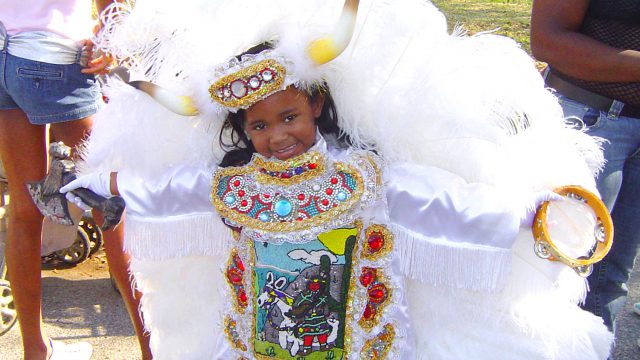
Young Indian shows off elaborate beading in her Indian suit. Photo: Zada Johnson -
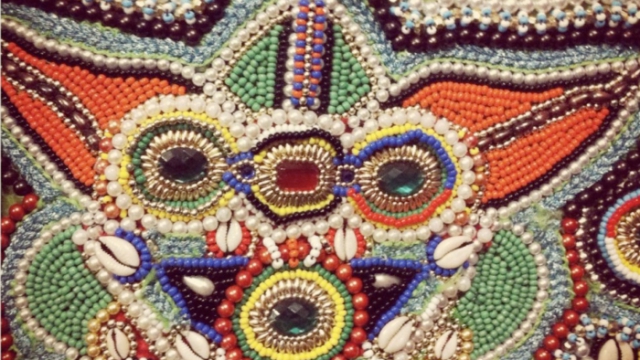
Big Chief Fi Yi Yi's Indian Suit Patch Detail. Photo: Backstreet Cultural Museum Of New Orleans -
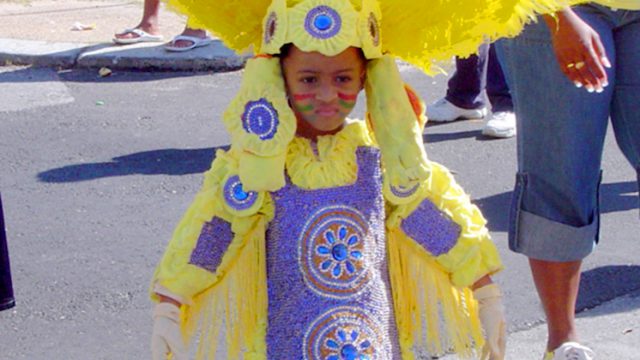
Young Mardi Gras Indian shows off her beautiful Indian suit. Photo: Zada Johnson -
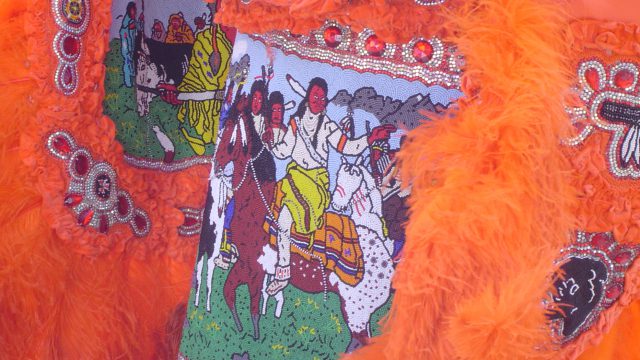
Scenic patch on the front of a Mardi Gras Indian Suit. Photo: Zada Johnson -

Young Mardi Gras Indian masquerades in his beautiful Indian suit. Photo: Zada Johnson -
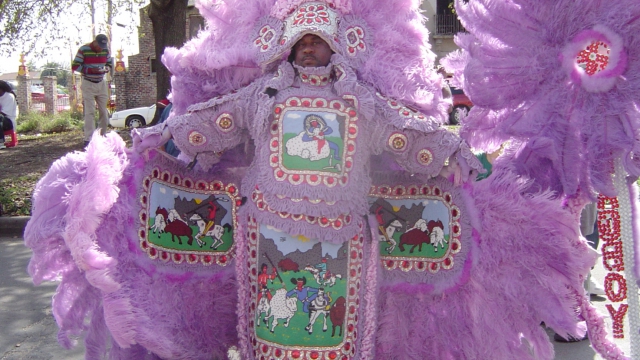
Mardi Gras Indian Flag Boy displays his beautiful beadwork patches. Photo: Zada Johnson -
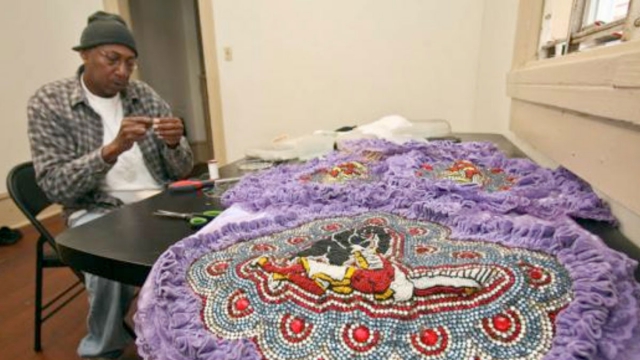
Big Chief Howard Miller of the Creole Wild West Mardi Gras Indians makes patches for his suit. Photo: Zada Johnson -

Big Chief Fi Yi Yi and the Mandingo Warriors Mardi Gras Indians Photo: Zada Johnson
Profiles
-
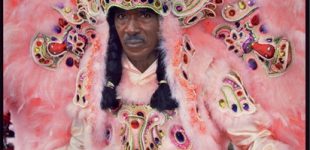
Big Chief Allison "Tootie" Montana -
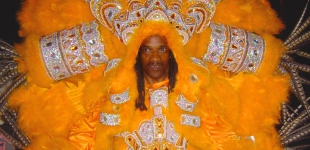
Big Chief Darryl Montana -
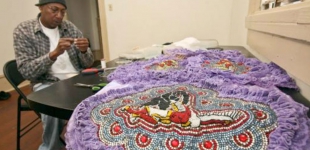
Big Chief Howard Miller -

Big Queen Cherice Harrison-Nelson -
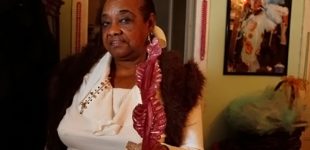
Litdell "Queen B" Banister
-
-
Engage
What activities will lead students into finding answers through this line of inquiry?
Activity One
Before beginning work with students, be sure to review the Introduction and the links to Music Rising Courses included in the Links & Documents section of this Teaching Strategy.
In this Teaching Strategy, students will learn how Mardi Gras Indians make the colorful suits that they wear each year. Students will identify materials and colors that are used in making Mardi Gras Indian Suits and design their own Mardi Gras Indian suits using construction paper and other materials.
In addition to resources found in this Teaching Strategy, materials needed are:
- Crayons and markers for each child to use
- Beans, Feathers, Beads, Shells, Glue, or old magazines for collage work
- Large sheets of construction paper (one per child)
Procedure:
- Describe the Mardi Gras Indians and discuss how they make carnival suits each year.
- Show examples of Mardi Gras Indian traditions from the Photos and Videos sections of this Teaching Strategy. Ask students to identify the materials that are used to make Mardi Gras Indian suits.
- Show students examples of similar materials in class (beads, cowrie shells, feathers, sequins, rhinestones, etc.). Allow students to touch the materials and to imagine how each would be attached to a Mardi Gras Indian suit.
- Have each student draw a picture of a design for their own Mardi Gras Indian suit and then decorate that suit using the materials available in class.
- When students have finished with their designs, show each one to the class and guide a discussion:
- What do you notice about this suit?
- How long do you think it would take to sew a full-sized version, by hand? Who would help you sew it?
- How would you stand if you were wearing this suit? How would you walk?
-
Connect
How do these investigations support other academic goals and objectives?
Curricular Connections Literacy – Speaking and Listening:
- Add drawings or other visual displays to descriptions as desired to provide additional detail. CCSS.ELA-Literacy.SL.K.5
Literacy – Writing:
- With guidance and support from adults, recall information from experiences or gather information from provided sources to answer a question. CCSS.ELA-Literacy.W.K.8
-
Reflect & Assess
How will you know what your students have learned?
Sample Reflection or Assessment Ask students to “turn and talk” and share the process of creating their Mardi Gras Indian suit design with a neighbor. Why did they make the choices they did? How might a full-size version of the design look different than this model?
-
-
-
Explore
Which of these audio and visual resources will activate imagination and draw students into this investigation?
Photos
-

Big Queen displays her beautiful bead work Photo: Zada Johnson -

Young Indian shows off elaborate beading in her Indian suit. Photo: Zada Johnson -

Big Chief Fi Yi Yi's Indian Suit Patch Detail. Photo: Backstreet Cultural Museum Of New Orleans -

Young Mardi Gras Indian shows off her beautiful Indian suit. Photo: Zada Johnson -

Scenic patch on the front of a Mardi Gras Indian Suit. Photo: Zada Johnson -

Young Mardi Gras Indian masquerades in his beautiful Indian suit. Photo: Zada Johnson -

Mardi Gras Indian Flag Boy displays his beautiful beadwork patches. Photo: Zada Johnson -

Big Chief Howard Miller of the Creole Wild West Mardi Gras Indians makes patches for his suit. Photo: Zada Johnson
Videos
Profiles
-

Big Chief Allison "Tootie" Montana -

Big Chief Darryl Montana -

Big Chief Howard Miller -

Big Queen Cherice Harrison-Nelson -

Litdell "Queen B" Banister
-
-
Engage
What activities will lead students into finding answers through this line of inquiry?
Activity One
Activity Two
Before beginning work with students, be sure to review the Introduction and the links to Music Rising Courses included in the Links & Documents section of this Teaching Strategy.
In this Teaching Strategy, students will learn how Mardi Gras Indians use rhyming words in the songs that accompany Mardi Gras Indian performance traditions. Students will learn about rhyming words and identify rhyming words in Mardi Gras Indian songs.
In addition to resources found in this Teaching Strategy, materials needed are:
- Index cards
Procedure:
- Discuss the Mardi Gras Indians with students and point out how they compose songs to describe their traditions.
- Explain the roles of Big Chief, Flagboy, and Spyboy in Mardi Gras Indian traditions. Also define new terms such as “squaw,” and Créole language words like “Handa Wanda” and “Jock a Mo Fino Hoo Na Ney.”
- Show examples of Mardi Gras Indian songs from the Videos section of this Teaching Strategy:
- Indian Red
- Big Chief
- Handa Wanda
- Refer to Mardi Gras Indians: Related Songs in the Links & Documents section of this Teaching Strategy. Put the lyrics on chart paper or a white board, project on a smart board, or make copies of the lyrics to distribute to students.
- Review with students the rhyming words (words that have the same ending sounds) found in these songs. Read lyrics aloud with students, and ask students to touch their noses each time they hear words that rhyme. When students touch their noses, stop reading, and ask them to identify the words that rhyme.
- Write rhyming words from the Mardi Gras Indian songs on index cards. Explain to students that they will now play the Mardi Gras Indian Rhyming Words game. There are two ways to play:
- Students can play in pairs, mixing up the cards and finding rhyming pairs.
- Students can play individually, like in the game “Concentration.” (They turn over each card individually, and try to remember where the rhyming card can be found.)
-
Connect
How do these investigations support other academic goals and objectives?
Curricular Connections Literacy – Reading: Literature
- Describe how words and phrases (e.g., regular beats, alliteration, rhymes, repeated lines) supply rhythm and meaning in a story, poem, or song. CCSS.ELA-Literacy.RL.2.4
-
Reflect & Assess
How will you know what your students have learned?
Sample Reflection or Assessment - Ask students to put the definition of rhyming words into their own words.
- Ask students to write a short descriptive text that answers the following question: “How do Mardi Gras Indians use rhyming words?”
- Ask students what rhyming words they remember from the songs without looking at the lyrics.
-
-
-
Explore
Which of these audio and visual resources will activate imagination and draw students into this investigation?
Photos
-

Big Queen displays her beautiful bead work Photo: Zada Johnson -
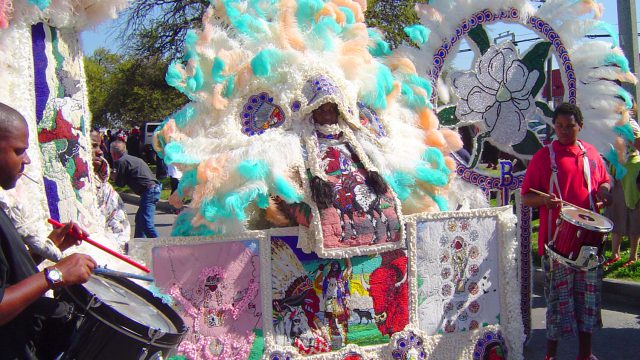
Big Chief Bo Dollis, Jr. during an Indian Sunday Mardi Gras Indian procession Photo: Zada Johnson -

Young Indian shows off elaborate beading in her Indian suit. Photo: Zada Johnson -

Big Chief Fi Yi Yi's Indian Suit Patch Detail. Photo: Backstreet Cultural Museum Of New Orleans -

Young Mardi Gras Indian shows off her beautiful Indian suit. Photo: Zada Johnson -

Scenic patch on the front of a Mardi Gras Indian Suit. Photo: Zada Johnson -

Young Mardi Gras Indian masquerades in his beautiful Indian suit. Photo: Zada Johnson -

Mardi Gras Indian Flag Boy displays his beautiful beadwork patches. Photo: Zada Johnson -

Big Chief Howard Miller of the Creole Wild West Mardi Gras Indians makes patches for his suit. Photo: Zada Johnson -

Big Chief Fi Yi Yi and the Mandingo Warriors Mardi Gras Indians Photo: Zada Johnson
Videos
Profiles
-

Big Chief Allison "Tootie" Montana -

Big Chief Darryl Montana -

Big Chief Howard Miller -

Big Queen Cherice Harrison-Nelson -

Litdell "Queen B" Banister
-
-
Engage
What activities will lead students into finding answers through this line of inquiry?
Activity One
Before beginning work with students, be sure to review the Introduction and the links to Music Rising Courses included in the Links & Documents section of this Teaching Strategy.
In this Teaching Strategy, students will learn how Mardi Gras Indians use their creative expression in making Indian suits as a way to compete for the prettiest in their processions through the city. Students will view photo and video examples of Mardi Gras Indian suits and write an explanatory text on who they think is the “prettiest,” or who has the best Mardi Gras Indian suit.
Procedure:
- Discuss the Mardi Gras Indians with students, and point out how they use the term “pretty” in their competition for who looks the best.
- Show photos of Mardi Gras Indians linked in the Photos section of this Teaching Strategy, and ask students to explain what they like about the design of each suit.
- Show “Mardi Gras Indians (Pretty Pretty) St. Joseph Day 2013” linked in the Videos section of this Teaching Strategy, and ask students:
- How do Mardi Gras Indians show that they are the prettiest?
- How do members of the community show that they like the different suits that Mardi Gras Indians make?
- Ask students to locate the word “pretty” in the dictionary and discuss what they think the Mardi Gras Indians mean by being pretty.
- Ask students to write an explanatory essay about which Mardi Gras Indian suit they think is the “prettiest” from the photos selected for discussion. Tell students that they should be sure to use descriptive details to explain why they think their choice is the prettiest.
- Give students examples of how to use the following elements in their essays:
- Linking words (also, another, and more)
- Concluding statements
-
Connect
How do these investigations support other academic goals and objectives?
Curricular Connections Literacy – Writing
- Write informative/explanatory texts to examine a topic and convey ideas and information clearly. CSS.ELA-Literacy.W.3.2
- Introduce a topic and group related information together; include illustrations when useful to aiding comprehension. CCSS.ELA-Literacy.W.3.2a
- Develop the topic with facts, definitions, and details. CSS.ELA-Literacy.W.3.2b
- Use linking words and phrases (e.g., also, another, and, more, but) to connect ideas within categories of information. CCSS.ELA-Literacy.W.3.2c
- Provide a concluding statement or section. CCSS.ELA-Literacy.W.3.2d
-
Reflect & Assess
How will you know what your students have learned?
Sample Reflection or Assessment Ask students to share their essays aloud. After sharing essays, ask students to consider:
- What are some of the different definitions of pretty?
-
-
-
Photos
-
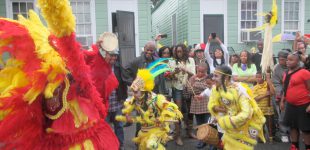
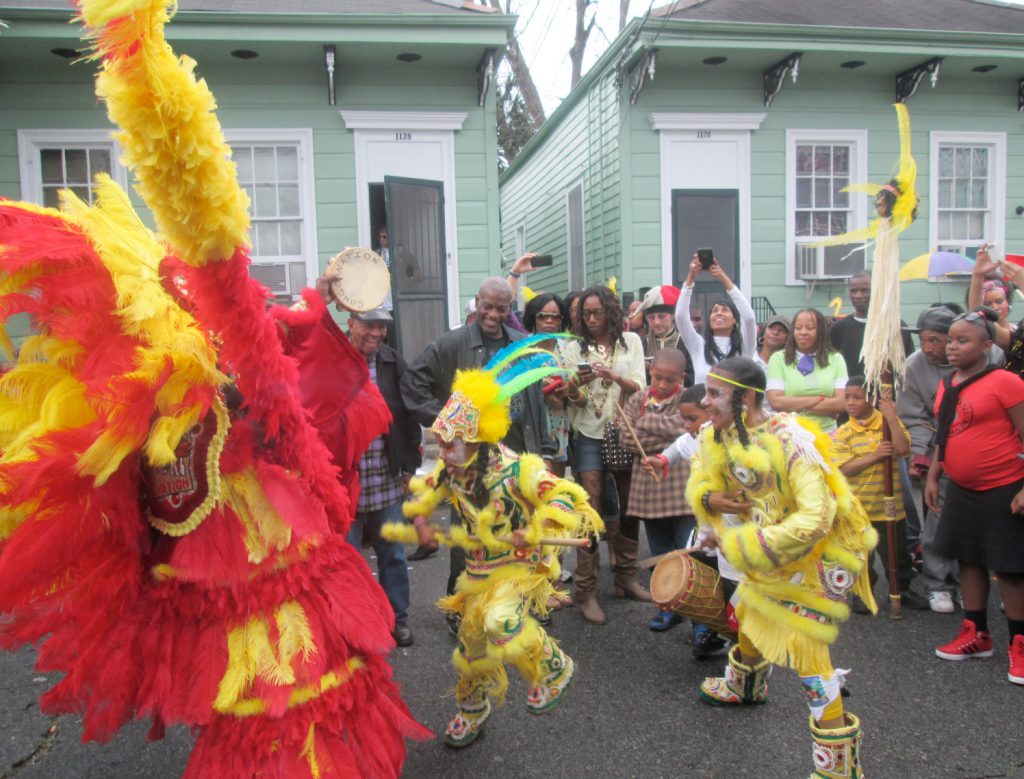
Members of Mandingo Warriors Mardi Gras Indians greet another Mardi Gras Indian gang in the historic African-American Treme Community Photo: Zada Johnson
Mardi Gras Indians Line of InquiryHow do Mardi Gras Indians use their masking traditions to bring families and communities together?
Audio
Links & Documents
Teaching Strategies
-
-
Explore
Which of these audio and visual resources will activate imagination and draw students into this investigation?
Photos
-
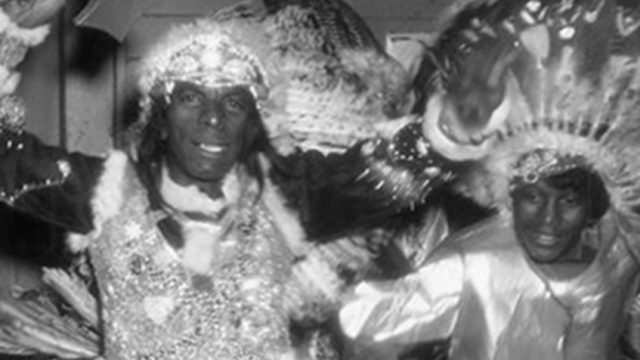
Yellow Pocahontas Mardi Gras Indians in the 1940s -
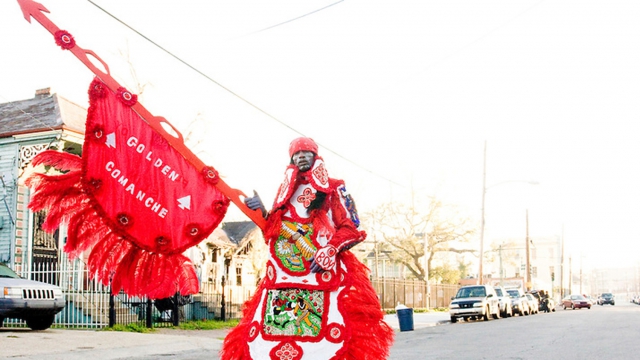
Golden Comanchie Flag Boy, Robert Stevenson Photo: Zada Johnson -
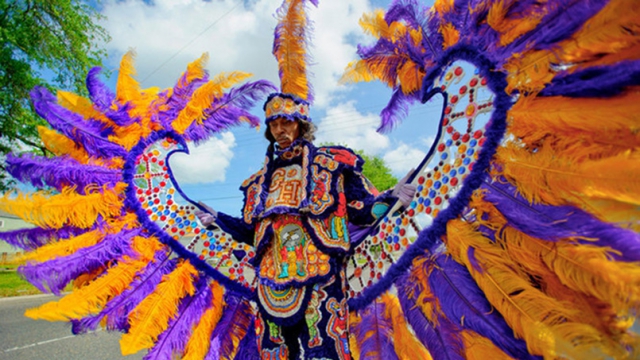
Geronimo Hunters Spy Boy Kevin Wallace -
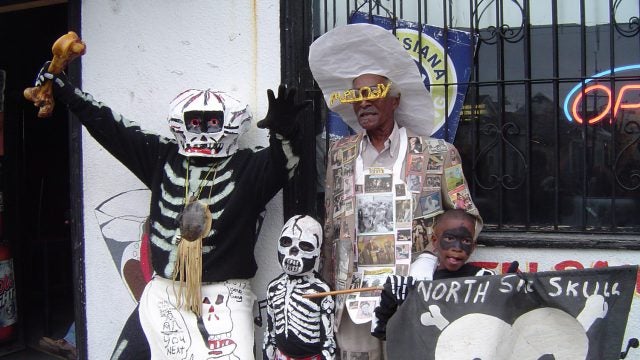
Northside Skull and Bone Gang "wake up the Mardi Gras" through the Treme neighborhood in New Orleans Photo: Zada Johnson -
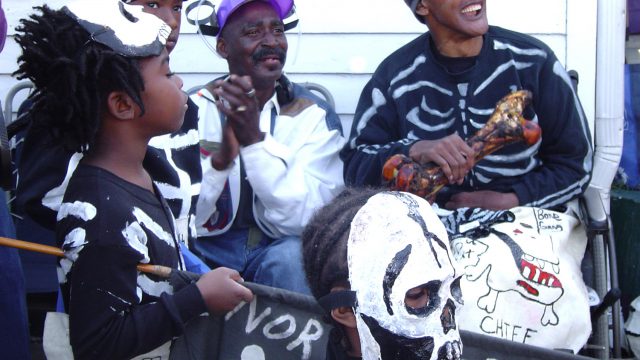
Big Chief Al Morris and young members of the Northside Skull and Bone Gang get ready to perform at the Backstreet Cultural Museum Photo: Zada Johnson -

Big Chief Jermaine Bossier and Big Queen of the Creole Hunters Mardi Gras Indians Photo: Zada Johnson -

Northside Skull and Bone Gang maskers pose in front of the Tomb of the Unknown Slave at historic St. Augustine Catholic Church in Treme Photo: Zada Johnson -

Big Chief Bruce Sunpie Barnes and Northside Skull and Bone masker Ronald Lewis celebrate Mardi Gras morning with community revelers at the Backstreet Cultural Museum Photo: Zada Johnson -
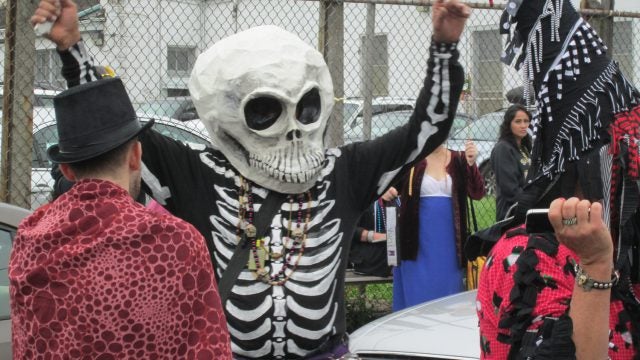
Northside Skull and Bone Gang dance with revelers on Mardi Gras morning at the Backstreet Cultural Museum Photo: Zada Johnson -
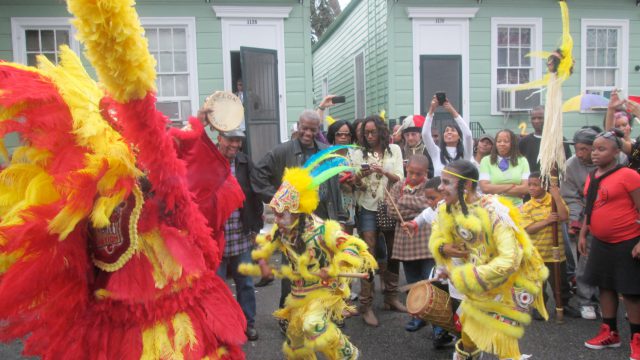
Members of Mandingo Warriors Mardi Gras Indians greet another Mardi Gras Indian gang in the historic African-American Treme Community Photo: Zada Johnson
Videos
Profiles
-

Big Chief Allison "Tootie" Montana -

Big Chief Darryl Montana -

Big Chief Howard Miller -

Big Queen Cherice Harrison-Nelson -

Litdell "Queen B" Banister
-
-
Engage
What activities will lead students into finding answers through this line of inquiry?
Activity One
Before beginning work with students, be sure to review the Introduction and the links to Music Rising Courses included in the Links & Documents section of this Teaching Strategy.
In this Teaching Strategy, students will learn the different roles of Mardi Gras Indians, including the Big Chief, Big Queen, Spy Boy and Flag Boy. Students will view photo and video examples of the different ranks of Mardi Gras Indians and answer comprehension questions based on what they have read and observed.
Procedure:
- Discuss the Mardi Gras Indians with students and point out that each Mardi Gras Indian group has different ranks, including: Big Chief, Big Queen, Spy Boy and Flag Boy
- Ask students to read the article, “Mardi Gras Indians, Ranks: Spy Boy, Flag Boy and Big Chiefs,” found in the Links & Documents section of this Teaching Strategy. Ask students to answer the following reading comprehension questions:
- What are the roles and responsibilities of the Big Chief, the Spy Boy and the Flag Boy?
- How are the Big Chief, Spy Boy and Flag Boy like a family?
- What do the “second liners” or other members of the community do when they see Mardi Gras Indians? How do Mardi Gras Indians bring the community together?
- Show “Queen B-A Portrait of Littdell Banister, Tribal Queen of the Creole Wild West Mardi Gras Indian Gang (2010),” linked in the Videos section of this Teaching Strategy. Ask students to answer the following comprehension questions:
- What is the reason Big Queen Littdell Banister began masking with the Mardi Gras Indians?
- How was her family involved in her decision to mask?
- According to Big Queen Littdell Banister, why is the Mardi Gras Indian tradition important to the history and heritage of the African-American community? What historical event is celebrated by Mardi Gras Indian traditions?
- How is the Big Queen of a Mardi Gras Indian masking group like a mother in a family?
-
Connect
How do these investigations support other academic goals and objectives?
Curricular Connections Literacy – Reading Informational Text
- Refer to details and examples in a text when explaining what the text says explicitly and when drawing inferences from the text. CCSS.ELA-Literacy.RI.4.1
Literacy – Reading with Fluency
- Read with sufficient accuracy and fluency to support comprehension. CCSS.ELA-Literacy.RF.4.4
- Read grade-level text with purpose and understanding. CCSS.ELA-Literacy.RF.4.4a
-
Reflect & Assess
How will you know what your students have learned?
Sample Reflection or Assessment Ask students to share their responses to the comprehension questions aloud. Use shared responses for continued class discussion.
-
-
-
Explore
Which of these audio and visual resources will activate imagination and draw students into this investigation?
Photos
-

Yellow Pocahontas Mardi Gras Indians in the 1940s -

Golden Comanchie Flag Boy, Robert Stevenson Photo: Zada Johnson -

Geronimo Hunters Spy Boy Kevin Wallace -

Northside Skull and Bone Gang "wake up the Mardi Gras" through the Treme neighborhood in New Orleans Photo: Zada Johnson -

Big Chief Al Morris and young members of the Northside Skull and Bone Gang get ready to perform at the Backstreet Cultural Museum Photo: Zada Johnson -

Big Chief Jermaine Bossier and Big Queen of the Creole Hunters Mardi Gras Indians Photo: Zada Johnson -

Northside Skull and Bone Gang maskers pose in front of the Tomb of the Unknown Slave at historic St. Augustine Catholic Church in Treme Photo: Zada Johnson -

Big Chief Bruce Sunpie Barnes and Northside Skull and Bone masker Ronald Lewis celebrate Mardi Gras morning with community revelers at the Backstreet Cultural Museum Photo: Zada Johnson -

Northside Skull and Bone Gang dance with revelers on Mardi Gras morning at the Backstreet Cultural Museum Photo: Zada Johnson -

Members of Mandingo Warriors Mardi Gras Indians greet another Mardi Gras Indian gang in the historic African-American Treme Community Photo: Zada Johnson
Audio
Videos
Profiles
-
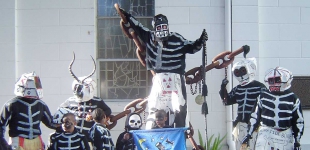
Northside Skull and Bone Mardi Gras Indian Gang
Links & Documents
-
-
Engage
What activities will lead students into finding answers through this line of inquiry?
Activity One
Before beginning work with students, be sure to review the Introduction and the links to Music Rising Courses included in the Links & Documents section of this Teaching Strategy.
In this Teaching Strategy, students will learn about the Northside Skull and Bone Gang, a New Orleans carnival society that masks alongside Mardi Gras Indians. Students will explore the different community messages that the Northside Skull and Bone Gang express during their morning procession to “wake up the Mardi Gras.”. Students will learn how the Northside Skull and Bone Gang bring their community together with their masking practices.
Procedure:
- Discuss the Northside Skull and Bone Gang with students, describing the role they play in “waking up the Mardi Gras” on Mardi Gras morning, and their association with Mardi Gras Indian groups.
- Ask students to read the following articles, linked through the Links & Documents section of this Teaching Strategy.
- “Maskers Carry on Carnival Tradition in Treme”
- “Skull and Bone Gangs”
- Show students the images of Northside Skull and Bone Gang found in the Photos section of this Teaching Strategy, and “The Northside Skull and Bone Mardi Gras Indian Gang,” found in the Videos section of this Teaching Strategy.
- After reading and viewing North Side Skull and Bone Gang resources, have the students answer the following comprehension questions:
- How long have Skull and Bone Gangs been masking in New Orleans? What does it mean to “wake up the Mardi Gras”?
- What is the Backstreet Cultural Museum? What kinds of exhibits can you see at the Backstreet Cultural Museum? How does it serve as a community center on Mardi Gras Day?
- What do members of the Northside Skull and Bone Gang do to help bring the community together on Mardi Gras? In your opinion, why is it important that communities come together?
-
Connect
How do these investigations support other academic goals and objectives?
Curricular Connections Literacy – Reading Informational Text
- Draw on information from multiple print or digital sources, demonstrating the ability to locate an answer to a question quickly or to solve a problem efficiently.
CCSS.ELA-Literacy.RI.5.7
- Integrate information from several texts on the same topic in order to write or speak about the subject knowledgeably. CCSS.ELA-Literacy.RI.5.9
- Draw on information from multiple print or digital sources, demonstrating the ability to locate an answer to a question quickly or to solve a problem efficiently.
-
Reflect & Assess
How will you know what your students have learned?
Sample Reflection or Assessment Ask students to share their responses to the comprehension questions aloud. Use shared responses for continued class discussion.
-
-
-
Explore
Which of these audio and visual resources will activate imagination and draw students into this investigation?
Photos
-

Yellow Pocahontas Mardi Gras Indians in the 1940s -

Golden Comanchie Flag Boy, Robert Stevenson Photo: Zada Johnson -

Geronimo Hunters Spy Boy Kevin Wallace -

Northside Skull and Bone Gang "wake up the Mardi Gras" through the Treme neighborhood in New Orleans Photo: Zada Johnson -

Big Chief Al Morris and young members of the Northside Skull and Bone Gang get ready to perform at the Backstreet Cultural Museum Photo: Zada Johnson -

Big Chief Jermaine Bossier and Big Queen of the Creole Hunters Mardi Gras Indians Photo: Zada Johnson -

Northside Skull and Bone Gang maskers pose in front of the Tomb of the Unknown Slave at historic St. Augustine Catholic Church in Treme Photo: Zada Johnson -

Big Chief Bruce Sunpie Barnes and Northside Skull and Bone masker Ronald Lewis celebrate Mardi Gras morning with community revelers at the Backstreet Cultural Museum Photo: Zada Johnson -

Northside Skull and Bone Gang dance with revelers on Mardi Gras morning at the Backstreet Cultural Museum Photo: Zada Johnson -

Members of Mandingo Warriors Mardi Gras Indians greet another Mardi Gras Indian gang in the historic African-American Treme Community Photo: Zada Johnson
Audio
Videos
Profiles
-

Big Chief Allison "Tootie" Montana -

Big Chief Darryl Montana -

Big Chief Howard Miller -

Big Queen Cherice Harrison-Nelson -

Litdell "Queen B" Banister
Links & Documents
-
-
Engage
What activities will lead students into finding answers through this line of inquiry?
Activity One
Before beginning work with students, be sure to review the Introduction and the links to Music Rising Courses included in the Links & Documents section of this Teaching Strategy.
In this Teaching Strategy, students will learn how Mardi Gras Indians are supported by their families and communities, and how this enables them to keep their masking traditions alive. Students will also learn to gather information about Mardi Gras Indians from primary and secondary sources
Procedure:
- Discuss the differences between primary and secondary sources. Ask students why they think primary sources are important for gathering information.Introduce students to the Mardi Gras Indians, and describe the ways in which Mardi Gras Indian maskers get assistance from their families and the surrounding community to make their Indian suits.
- Give students guidelines for how to take notes as they read articles or watch videos. Tell students that they will need to identify key information to help answer the question, “How do Mardi Gras Indians get assistance from their families and surrounding community?”
- For each of the following resources found in the Links & Documents or Videos sections of this Teaching Strategy, ask students:
- Whether this is a primary or secondary resource
- To annotate the article or take notes on the video, highlighting key information that will reveal how families and communities take part in making Mardi Gras Indian suits.
Resources:
- “Mardi Gras Indians’ Suits Stitched With Help of Invisible Hands” (Links & Documents)
- “Mardi Gras Indians” entry in KnowLA Encyclopedia of Louisiana, (Links & Documents)
- “Portrait of a Chief” (Joshua Bee Alafia) (Videos)
- After reading and viewing Mardi Gras Indian resources, have the students answer the following comprehension questions:
- What is the difference between a primary and secondary source?
- What type of information did you collect from the readings on how Mardi Gras Indians are supported by their families and community? In your opinion, why are these types of connections with family and community important?
- What types of information can you collect from primary sources that you may not get from a secondary source? Why are primary sources important for research?
-
Connect
How do these investigations support other academic goals and objectives?
Curricular Connections Literacy – Reading History
- Determine the central ideas or information of a primary or secondary source; provide an accurate summary of the source distinct from prior knowledge or opinions. CCSS.ELA-Literacy.RH.6-8.2
- Analyze the relationship between a primary and secondary source on the same topic.
CCSS.ELA-Literacy.RH.6-8.9
-
Reflect & Assess
How will you know what your students have learned?
Sample Reflection or Assessment Ask students to share their responses to comprehension questions aloud. Use shared responses for continued class discussion. Ask students to write an informative/explanatory text on the role that Mardi Gras Indians play in bringing families and communities together.
-
-
-
Photos
-
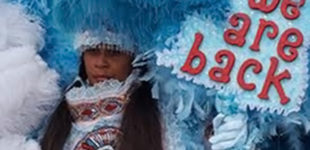
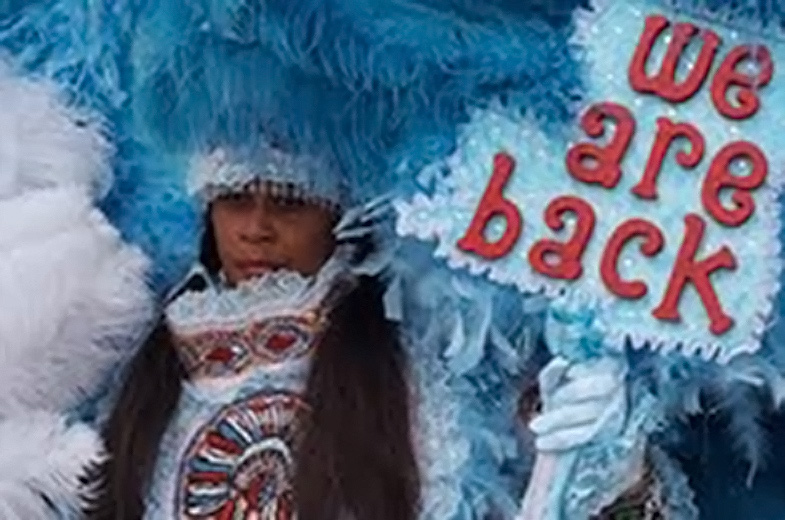
We Are Back -


Big Chief Darryl Montana of Yello Pocahontas, featuring a suit dedicated to his father, Big Chief Tootie Montana Photo: Zada Johnson
Mardi Gras Indians Line of InquiryHow do Mardi Gras Indians use their traditions to challenge social injustice and overcome adversity?
Videos
Audio
Profiles

Big Chief Allison "Tootie" Montana 
Big Chief Darryl Montana 
Big Chief Howard Miller 
Big Queen Cherice Harrison-Nelson 
Litdell "Queen B" Banister
Links & Documents
- Article: My Knee Will Bend No More/Mardi Gras Indians and Tootie Montana (www.kalamu.com)
- Article: Mardi Gras Indians-Culture and Community Empowerment by Micheal Smith (www.louisianafolklife.org)
- Article: Legacy of cultural resistance in New Orleans (www.workers.org)
- Article: The New Orleans Agenda – Allison Big Chief Tootie Montana Day (www.newcitynola.org)
- Article: Mardi Gras Indians: The Times-Picayune covers 175 years of New Orleans history (www.nola.com)
- Article: St. Joseph’s Night shows the improved relations between police, Mardi Gras Indians (www.nola.com)
- Article: FiYiYi and the Mandingo Warriors (www.djibnet.com)
- Article: Post-Katrina New Orleans A Story Of Modern Pioneering (www.npr.org)
- Article: The Right to Return Then and Now – Guardians of the Flame (www.pbs.org)
- Article: Mardi Gras Indians Battle Effects of Katrina One Bead at a Time (www.theledger.com)
Teaching Strategies
-
-
Explore
Which of these audio and visual resources will activate imagination and draw students into this investigation?
Photos
-
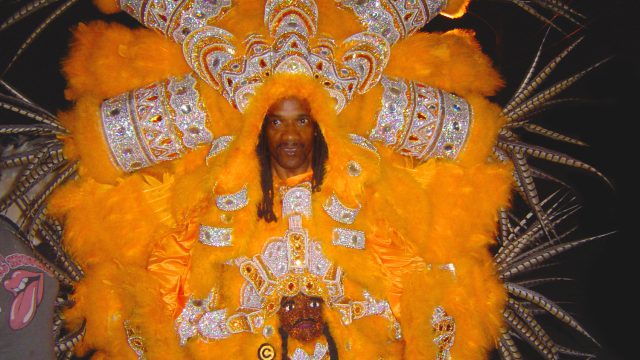
Big Chief Darryl Montana of Yello Pocahontas, featuring a suit dedicated to his father, Big Chief Tootie Montana Photo: Zada Johnson -
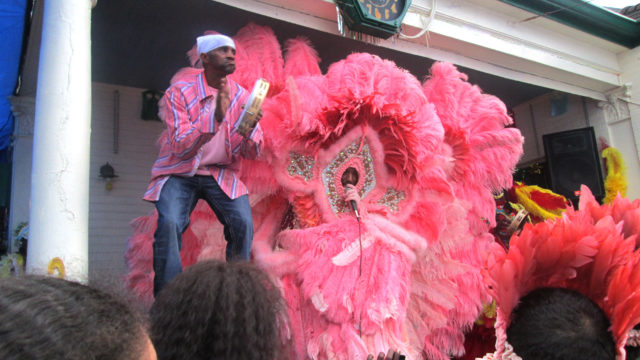
Big Chief Donald Harrison Jr. and the Congo Nation Mardi Gras Indians Photo: Zada Johnson -

Big Chief Fi Yi Yi (Victor Harris), leader of Fi Yi Yi and the Mandingo Warriors -
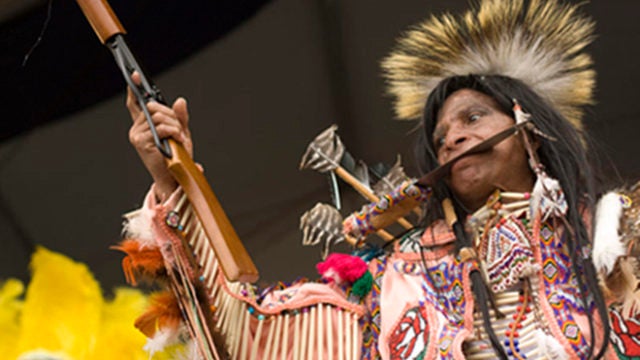
Big Chief Walter Cook of the Creole Wild West Mardi Gras Indians, the first known Mardi Gras Indian masking society -

Big Queen Cherice Harrison Nelson explains the meaning of her "Tears of America" suit that she made in memory of Hurricane Katrina -
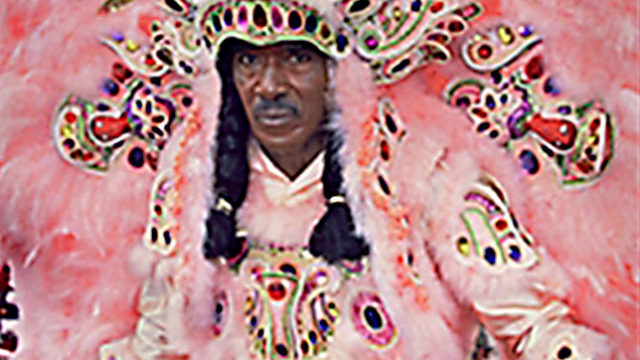
Legendary Big Chief Tootie Montana of Yellow Pocahontas Photo: Michael Smith -
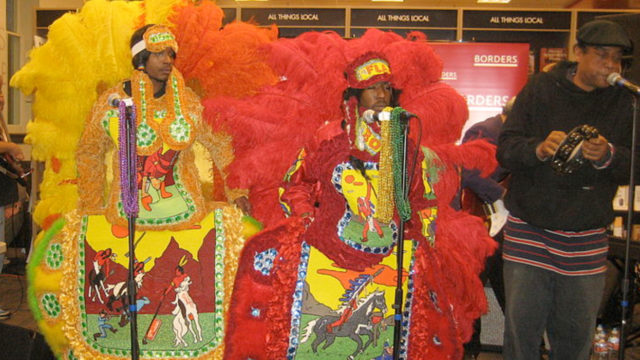
Mardi Gras Indians displaying their beautiful Indian suits at a performance -

Mardi Gras Indians in the historic African-American Treme community in the 1960s -

Members of Mandingo Warriors Mardi Gras Indians greet another Mardi Gras Indian gang in the historic African-American Treme Community Photo: Zada Johnson -
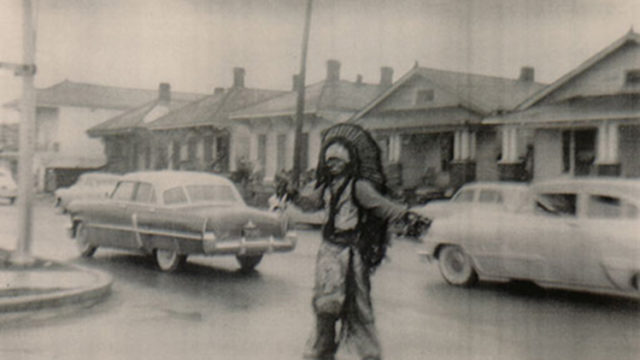
New Orleans Musician Ernie K-Doe masking with Young Sons on Geronimo Mardi Gras Indians in the 1950s -
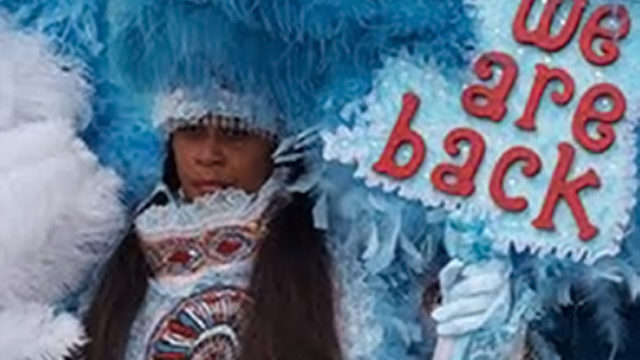
We Are Back
Audio
Videos
Profiles
-

Big Chief Allison "Tootie" Montana -

Big Chief Darryl Montana -

Big Chief Howard Miller -

Big Queen Cherice Harrison-Nelson -

Litdell "Queen B" Banister
Links & Documents
-
-
Engage
What activities will lead students into finding answers through this line of inquiry?
Activity One
Before beginning work with students, be sure to review the Introduction and the links to Music Rising Courses included in the Links & Documents section of this Teaching Strategy.
In this Teaching Strategy, students will conduct a short (5-paragraph) research project on how Mardi Gras Indians celebrate their history and heritage. Students will also learn to gather information from multiple print and digital sources.
Procedure:
1. Review the basic elements of a research project with students and tell them that they will be conducting a short (5-paragraph) research project that will answer the following prompt: How do Mardi Gras Indians Celebrate Their History and Heritage?2. Introduce students to the Mardi Gras Indian traditions and help them to brainstorm questions that they need to investigate in order to answer the research prompt.
3. Before reading, give students guidelines for how to take notes as they read so that they can identify key information that will help them answer the research prompt.
4. For each of the following resources found in the Links & Documents or Videos sections of this Teaching Strategy, guide students in their note taking and have them share their notes with the class.
Resources:
- Article: “My Knee Will Bend No More/Mardi Gras Indians and Tootie Montana” (Links & Documents)
- Article: “Mardi Gras Indians: Culture and Community Empowerment” (Links & Documents)
- Video: “Portrait of a Chief” – Joshua Bee Alafia. (Videos)
5. Ask students to search the Music Rising website for one additional source to use in their research. Help students brainstorm appropriate search terms.
6. Review the outlining process for their research essays. When students are in the drafting stage, review paraphrasing and proper citation format.
-
Connect
How do these investigations support other academic goals and objectives?
Curricular Connections Literacy – Writing: History & Social Studies
- Conduct short research projects to answer a question (including a self-generated question), drawing on several sources and generating additional related, focused questions that allow for multiple avenues of exploration. CCSS.ELA-Literacy.WHST.6-8.7
- Gather relevant information from multiple print and digital sources, using search terms effectively; assess the credibility and accuracy of each source; and quote or paraphrase the data and conclusions of others while avoiding plagiarism and following a standard format for citation. CCSS.ELA-Literacy.WHST.6-8.8
-
Reflect & Assess
How will you know what your students have learned?
Sample Reflection or Assessment Have students conduct a peer review of each other’s essays. Have students develop a Power Point presentation of their research to present to the class.
-
-
-
Explore
Which of these audio and visual resources will activate imagination and draw students into this investigation?
Photos
-

Big Chief Darryl Montana of Yello Pocahontas, featuring a suit dedicated to his father, Big Chief Tootie Montana Photo: Zada Johnson -

Big Chief Donald Harrison Jr. and the Congo Nation Mardi Gras Indians Photo: Zada Johnson -

Big Chief Fi Yi Yi (Victor Harris), leader of Fi Yi Yi and the Mandingo Warriors -

Big Chief Walter Cook of the Creole Wild West Mardi Gras Indians, the first known Mardi Gras Indian masking society -

Big Queen Cherice Harrison Nelson explains the meaning of her "Tears of America" suit that she made in memory of Hurricane Katrina -

Legendary Big Chief Tootie Montana of Yellow Pocahontas Photo: Michael Smith -

Mardi Gras Indians displaying their beautiful Indian suits at a performance -

Mardi Gras Indians in the historic African-American Treme community in the 1960s -

Members of Mandingo Warriors Mardi Gras Indians greet another Mardi Gras Indian gang in the historic African-American Treme Community Photo: Zada Johnson -

New Orleans Musician Ernie K-Doe masking with Young Sons on Geronimo Mardi Gras Indians in the 1950s
Audio
Profiles
-

Big Chief Allison "Tootie" Montana -

Big Chief Darryl Montana -

Big Chief Howard Miller -

Big Queen Cherice Harrison-Nelson -

Litdell "Queen B" Banister
Links & Documents
- Article: Legacy of cultural resistance in New Orleans (www.workers.org)
- Article: The New Orleans Agenda – Allison Big Chief Tootie Montana Day (www.newcitynola.org)
- Article: Mardi Gras Indians: The Times-Picayune covers 175 years of New Orleans history (www.nola.com)
- Article: St. Joseph’s Night shows the improved relations between police, Mardi Gras Indians (www.nola.com)
-
-
Engage
What activities will lead students into finding answers through this line of inquiry?
Activity One
Activity Two
Before beginning work with students, be sure to review the Introduction and the links to Music Rising Courses included in the Links & Documents section of this Teaching Strategy.
In this Teaching Strategy, students will write an informative/explanatory essay on the ways in which three leaders in the Mardi Gras Indian community have challenged social injustice. Students will explore the lives and activist work of Tootie Montana, Cherice Harrison Nelson and Jerome Smith. Students will learn to gather information from multiple print and digital sources.
Procedure:
1. Review the basic elements of an informative/explanatory essay with students and tell them that they will writing an informative/explanatory essay that will answer the following prompt:
- How have Mardi Gras Indians challenged the social injustices that they have faced in New Orleans?
2. Discuss the definition of social justice and social injustice. Ask students to give examples of social injustice as a warm up to prepare them for writing their informative/explanatory essay.
3. Give background on the Mardi Gras Indians and discuss the social injustices that Mardi Gras Indians have faced. (Note: for Jerome Smith, point out to students that he sewed for Tootie Montana and the Yellow Pocahontas Mardi Gras Indians as a youth, and was inspired by Mardi Gras Indian traditions to become involved in the Civil Rights Movement) [see Rogers, Kim Lacy. Righteous Lives: Narratives of the New Orleans Civil Rights. New York: New York University Press, 1993. pgs 110-112].
1. Before they begin research, give students guidelines for how to take notes as they read in order to find key information that will help them answer the research prompt.
2. Ask students to read and view the following resources, found in the Ask students to read and view the following resources, found in the Links & Documents and Videos sections of this Teaching Strategy. Alternately, students can be split into three groups to focus on one individual.
Cherice Harrison-Nelson
- Article: “Legacy of Cultural Resistance in New Orleans” (Links & Documents)
- Video: “Sophielab 146 Days to Mardi Gras with Big Queen Cherice Harrison-Nelson, Guardians of the Flame” (Videos)
Big Chief Tootie Montana
- The New Orleans Agenda: Allison “Big Chief Tootie” Montana Day” – Joshua Bee Alafia (Videos)
- Article: “Mardi Gras Indians: The Times Picayune Covers 175 Years of New Orleans History” (Links & Documents)
Jerome Smith
- Article: “St. Joseph’s Night shows the improved relations between police, Mardi Gras Indians” (Links & Documents)
3. Ask students to search the Music Rising website or other webpages for two additional sources to use for their research. Help students brainstorm appropriate search terms.
4. Review the outlining process for their research essays. When students are in the drafting stage, review paraphrasing and proper citation format.
-
Connect
How do these investigations support other academic goals and objectives?
Curricular Connections Literacy – Writing:
- Write informative/explanatory texts to examine and convey complex ideas, concepts, and information clearly and accurately through the effective selection, organization, and analysis of content.
CCSS.ELA-Literacy.W.9-10.2
- Write informative/explanatory texts to examine and convey complex ideas, concepts, and information clearly and accurately through the effective selection, organization, and analysis of content.
-
Reflect & Assess
How will you know what your students have learned?
Sample Reflection or Assessment Have students conduct a peer review of each other’s essays. Have students develop a Power Point presentation of their research to present to the class.
-
-
-
Explore
Which of these audio and visual resources will activate imagination and draw students into this investigation?
Photos
-

Big Chief Darryl Montana of Yello Pocahontas, featuring a suit dedicated to his father, Big Chief Tootie Montana Photo: Zada Johnson -

Big Chief Donald Harrison Jr. and the Congo Nation Mardi Gras Indians Photo: Zada Johnson -

Big Chief Fi Yi Yi (Victor Harris), leader of Fi Yi Yi and the Mandingo Warriors -

Big Chief Walter Cook of the Creole Wild West Mardi Gras Indians, the first known Mardi Gras Indian masking society -

Big Queen Cherice Harrison Nelson explains the meaning of her "Tears of America" suit that she made in memory of Hurricane Katrina -

Legendary Big Chief Tootie Montana of Yellow Pocahontas Photo: Michael Smith -

Mardi Gras Indians displaying their beautiful Indian suits at a performance -

Mardi Gras Indians in the historic African-American Treme community in the 1960s -

Members of Mandingo Warriors Mardi Gras Indians greet another Mardi Gras Indian gang in the historic African-American Treme Community Photo: Zada Johnson -

New Orleans Musician Ernie K-Doe masking with Young Sons on Geronimo Mardi Gras Indians in the 1950s -

We Are Back
Audio
Videos
Profiles
-

Big Chief Allison "Tootie" Montana -

Big Chief Darryl Montana -

Big Chief Howard Miller -

Big Queen Cherice Harrison-Nelson -

Litdell "Queen B" Banister
Links & Documents
- Article: FiYiYi and the Mandingo Warriors (www.djibnet.com)
- Article: Post-Katrina New Orleans A Story Of Modern Pioneering (www.npr.org)
- Article: The Right to Return Then and Now – Guardians of the Flame (www.pbs.org)
- Article: Mardi Gras Indians Battle Effects of Katrina One Bead at a Time (www.theledger.com)
-
-
Engage
What activities will lead students into finding answers through this line of inquiry?
Activity One
Activity Two
Before beginning work with students, be sure to review the Introduction and the links to Music Rising Courses included in the Links & Documents section of this Teaching Strategy.
In this Teaching Strategy, students will learn the difference between primary and secondary sources. Students will explore the way that Mardi Gras Indians have used their masking traditions to overcome adversity, including the devastation of Hurricane Katrina.
Procedure:
1. Discuss the differences between primary and secondary sources. Ask students why they think primary sources are important for conducting research.
2. Give background on the Mardi Gras Indians and Hurricane Katrina.
3. Have students read the articles listed in the materials section of this lesson plan. Before reading, give students guidelines for how to take notes as they read, in order to identify key information that will help them answer the research prompt.
4. Discuss the following questions to prepare students for their analysis of primary and secondary sources:
- How were Mardi Gras Indians affected by Hurricane Katrina? How did they use their masking traditions to help them cope with the devastation and loss of Hurricane Katrina?
- How did Big Chief FiYiYi use his platform as a Mardi Gras Indian to convince residents of New Orleans to return to the city after the storm?
- Why do you think it was important for Mardi Gras Indians to continue their traditions after Hurricane Katrina?
1. Ask students to choose two of the readings from this lesson plan and summarize their central ideas in short paragraphs. Discuss their responses as a class and review with students how to summarize main ideas from a primary source.
2. Ask students to search the Music Rising website or other webpages for two additional primary sources to summarize. Help students brainstorm appropriate search terms.
3. Ask students to write an informative essay on Mardi Gras Indians and Hurricane Katrina based on the sources from the lesson and the sources that they found on their own. Review the outlining process for their research essays. When students are in the drafting stage, review paraphrasing and proper citation format for their sources.
-
Connect
How do these investigations support other academic goals and objectives?
Curricular Connections Literacy – Reading History
- Cite specific textual evidence to support analysis of primary and secondary sources, connecting insights gained from specific details to an understanding of the text as a whole. CCSS.ELA-Literacy.RH.11-12.1
- Determine the central ideas or information of a primary or secondary source; provide an accurate summary that makes clear the relationships among the key details and ideas. CCSS.ELA-Literacy.RH.11-12.2
- Evaluate various explanations for actions or events and determine which explanation best accords with textual evidence, acknowledging where the text leaves matters uncertain. CCSS.ELA-Literacy.RH.11-12.3
-
Reflect & Assess
How will you know what your students have learned?
Sample Reflection or Assessment Ask students to conduct a peer review of each other’s essays. Ask students how the use of primary sources was helpful in their analysis and understanding of Hurricane Katrina and Mardi Gras Indian traditions. Have students develop a Power Point presentation of their research to present to the class.
-
-
